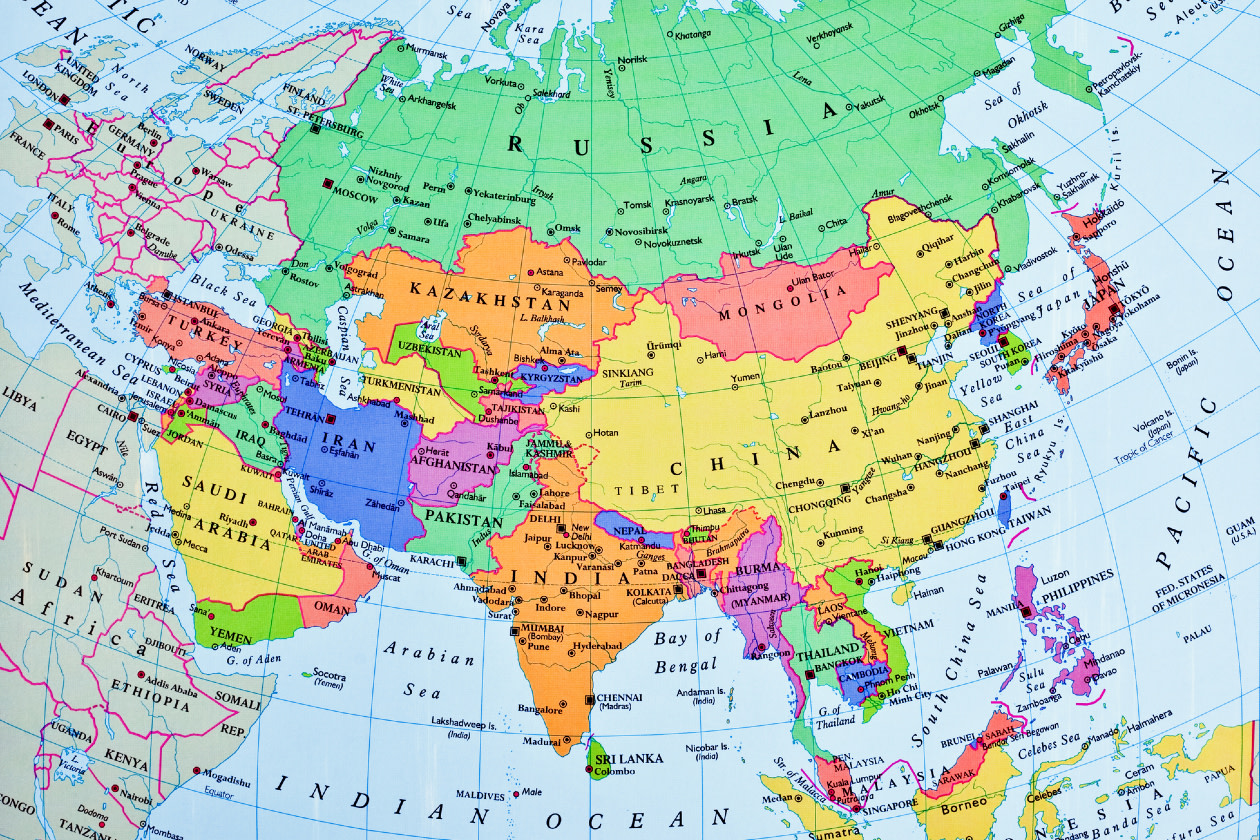Countries across Asia are coming to the end of interest rate cutting cycles. India, China, Korea and Australia all maintained current levels at recent central bank meetings.
There’s been growth in exports from China, despite recent tariff-induced volatility. While exports to the US fell 27% compared to the year before, trade rose in other regions. Exports to Africa were 56% higher while the ASEAN region imported 15% more goods from China.
Argentina’s president Javier Milei enjoyed success in mid-term elections. This came amid a difficult economic backdrop, with the US stepping in to help support the struggling local currency.
This article isn’t personal advice. If you’re not sure an investment is right for you, ask for financial advice. Remember, all investments and any income from them can rise and fall in value, so you could get back less than you invest. Past performance isn’t a guide to the future.
What’s happened with tariffs?
US tariffs have been a constant headline grabber in 2025. Since a range of global tariffs were announced in April, investors have attempted to gauge the impact on trade. This has been against a constant backdrop of pauses, escalations and rollbacks of tariff implementation.
But after US President Donald Trump visited several Asian countries at the end of October, are we any closer to having clarity?
Unfortunately, the answer isn’t straightforward.
Relations between China and the US, the world’s two largest economies, have been at the heart of the tariff saga. A number of tit-for-tat exchanges over the past few months saw the US threaten to implement tariffs on China of up to 145%. China retaliated with threats of restricting the supply of rare-earth minerals that have critical importance in everyday technologies. China owns a large share of the land where these are found and currently has an effective monopoly in refining them for use.
Following an October meeting between Trump and Chinese President Xi Jinping, tensions have de-escalated.
The US agreed to lower an additional tariff rate imposed on Chinese goods earlier this year from 20% to 10%, as well as suspend plans to sanction more Chinese companies. In return, China will ease restrictions on rare-earth exports while also importing larger volumes of US agricultural output. On the face of it, both sides get what they want. But as always, the devil’s in the detail. This is closer to a further pause in hostilities rather than a formal trade agreement, and one which will only be in place for the next 12 months.
South Korea has also seen a reduction in tariff rates, from 25% to 15%, after pledging to increase investments in the US economy. On the other hand, India was hit with a tariff rate of 50% in August, which includes a penalty for the country's continued use of Russian oil. This led to a sharp drop in Indian exports to the US in September.
How have stock markets fared?
Global markets have mostly enjoyed a positive 2025 so far and emerging markets haven’t missed out on these gains. A theme since the start of the year is a weakening US dollar, which typically provides a tailwind for emerging markets as the cost of these countries, and companies within them, servicing their dollar-denominated debt eases.
The 12 months to October 2025 saw the MSCI Emerging Markets index rise 25.92%*, while MSCI AC Asia Pacific ex Japan rose by 23.38%. Companies in the technology and industrials sectors were among some of the top performing, while consumer staples companies have struggled.
India and China, two of the largest Asian markets, enjoyed contrasting fortunes. China rose 31.03%, buoyed by the global AI trend with tech giants Tencent and Alibaba both seeing significant growth. India has struggled recently, with the MSCI India benchmark falling 1.64%. Many foreign investors have reduced their holdings in the country as strong market performance in recent years led to companies becoming more expensive.
Korea has been the standout performer of the past 12 months, with the market gaining 65.40%. This year saw the country elect a new president who has outlined plans for market reform, which investors view favourably.
There’s also been strong growth in emerging markets outside of Asia, with Poland and South Africa performing well. In Latin America, Mexico and Brazil have seen strong returns.
Annual percentage growth
October 2020 to October 2021 | October 2021 to October 2022 | October 2022 to October 2023 | October 2023 to October 2024 | October 2024 to October 2025 | |
|---|---|---|---|---|---|
MSCI Emerging Markets | 10.68% | -17.53% | 5.57% | 18.87% | 25.92% |
MSCI AC Asia Pacific ex Japan | 9.53% | -17.83% | 6.37% | 21.46% | 23.38% |
MSCI China | -14.27% | -37.87% | 15.13% | 15.15% | 31.03% |
MSCI India | 42.17% | 11.42% | -0.79% | 26.51% | -1.64% |
MSCI Korea | 17.37% | -21.36% | 3.33% | 3.01% | 65.40% |
How have Wealth Shortlist funds performed?
Performance has varied for the Asia and emerging markets funds on the Wealth Shortlist over the past 12 months. This is expected though, as fund managers have different investment styles and areas of focus, which bring success at different times.
Investing in funds isn't right for everyone. Investors should only invest if the fund's objectives are aligned with their own, and there's a specific need for the type of investment being made. Investors should understand the specific risks of a fund before they invest, and make sure any new investment forms part of a long-term diversified portfolio.
If you’re looking to invest in emerging markets, a fund that offers wide exposure to Asia or a global emerging markets fund could be a good option. Remember though, investing in these areas typically comes with higher levels of risk than developed markets.
For more details on each fund, including its risks and charges, see the links to their factsheets and key investor information below.
JPM Emerging Markets
Our top performing Wealth Shortlist fund in this sector over the 12 months to October 2025 was JPM Emerging Markets, which returned 32.13%*. This beat the benchmark’s growth as well as the 23.22% gain of the peer group average.
Leon Eidelman is the fund’s lead manager since 2016. He’s supported by co-managers Austin Forey and John Citron.
The managers invest in high-quality companies they believe can sustain earnings growth over the long term. They consider the financial strength of a business, the quality of the management team, and the level of corporate governance.
Our analysis shows that the managers’ stock picking abilities drove returns, with technology companies SK Hynix and Delta Electronics performing strongly.
Jupiter India
Jupiter India was the weakest of our Wealth Shortlist funds in this sector over the past 12 months.
The fund gained 4.20% in this period, ahead of both the MSCI India benchmark and the average fund in the IA India/Indian Subcontinent sector, which both fell in value. Relative to other Asian and emerging markets, India has been weaker in recent months. This follows a period of strong growth for the market.
Avinash Vazirani, the fund’s lead manager, has a long track record of successful investing in India and has managed this fund since launch in 2008.
His philosophy is ‘growth at a reasonable price’, where he looks for financially robust companies that generate strong cash flow and are currently priced lower than their earnings potential merits.
Alongside investing in a single emerging market, the fund can also invest in higher-risk smaller companies.
Annual percentage growth
October 2020 to October 2021 | October 2021 to October 2022 | October 2022 to October 2023 | October 2023 to October 2024 | October 2024 to October 2025 | |
|---|---|---|---|---|---|
JPM Emerging Markets | 6.04% | -27.63% | 4.38% | 11.93% | 32.13% |
IA Global Emerging Markets | 14.34% | -19.90% | 5.31% | 16.40% | 23.22% |
Jupiter India | 51.75% | 10.51% | 18.98% | 36.96% | 4.20% |
IA India/Indian Subcontinent | 43.57% | 6.24% | 3.40% | 23.95% | -3.95% |


